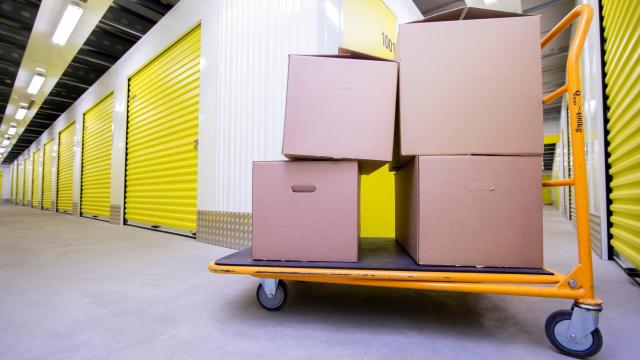So, you have a bunch of extra stuff at home that you don’t want to throw away, but you don’t have room for, either. You’ve already Kondo-ed everything, getting rid of what you don’t need or doesn’t spark joy. You’ve triple checked all the potential storage spots in your house — the attic, basement, crawlspaces, under the stairs — and you’re all all out of space. It’s probably time to rent a storage unit.
But what size do you need? Get one that’s too big, and you’re paying for room you need. Get one that’s too small, and you’re facing the same problem you started with. Fortunately, Brie Greenhalgh at BobVila.com has some tips that should help you find a storage unit that’s just the right size. Here’s what to do.
Pack up your stuff
To figure out what size storage unit you’ll need, Greenhalgh recommends starting by packing up the stuff you need to store. But not just making piles — actually boxing it up or putting it into plastic bins the way you will when you actually store it (including putting bubble wrap around anything fragile).
Estimate the amount of space you’ll need
Then make a pile of all the boxes, containers, and furniture, and estimate the cubic volume. Otherwise, Greenhalgh says you’ll need to estimate the space you need based on the dimensions of your largest or bulkiest items, plus the boxes you’ll be storing. According to Greenhalgh, you can calculate that in two ways:
- Multiply the length and width of all your items while stacked together, or add each item’s measurements individually. This will give you a total square foot measurement. If the pile comes out to 2.44 m by 2.44 m, then you need at least a 64-square-foot storage unit.
- Multiply the length, width, and height of all your items while stacked together, or add each item’s measurements individually. This will give you a total cubic foot measurement. If the pile comes out to 8 by 8 by 2.44 m, then you need at least a 512-cubic-foot storage unit.
Greenhalgh says that, on average, storage unit sizes are as follows:
-
Small: up to 50 square feet (400 cubic feet)
-
Medium: up to 150 square feet (1,200 cubic feet)
-
Large: up to 300 square feet (2,400 cubic feet)
Think about the future
Unless you only need short-term storage, you should consider your plans for the future, and whether that involves adding more stuff to your unit. According to Greenhalgh, it’s generally less expensive to rent one larger unit than two different-sized units, even if you don’t use all of the space immediately.

Leave a Reply
You must be logged in to post a comment.